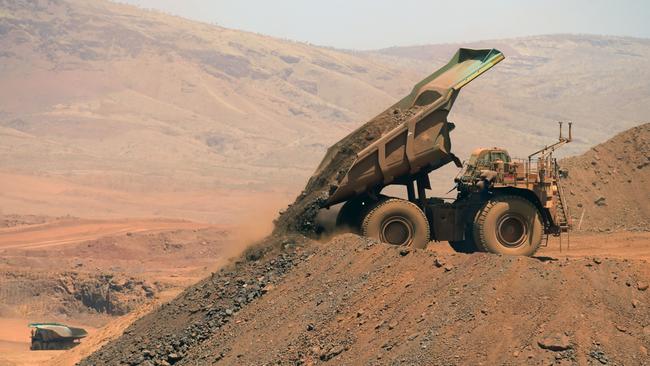Iron ore demand to remain strong despite China’s domestic weakness
Rio Tinto sees no slackening in iron ore demand, as China lifts steel exports to cover weakness in its domestic steel industry.

Rio Tinto says it expects to see strong iron ore demand from China as exports surge from the world’s biggest steel producer, despite last quarter’s plunge in the iron ore price.
Iron ore prices dipped below $US100 a tonne to hit a 10 month lows in early April, from levels around $US130 a tonne at the start of the year, on the back of China’s property downturn and weakness in infrastructure demand.
Prices have since recovered to back around $US110 a tonne and Rio said on Wednesday that, while domestic steel demand in China was still sitting at similar levels to last year.
“But steel exports rose 30 per cent year-on-year during the first two months and are likely to remain historically elevated, in turn, supporting iron ore demand,” the company said.
“China’s economic recovery has been uneven, prompting more government support to sustain growth and meet the target of around 5 per cent GDP growth this year.
“The manufacturing sector remains strong, given increased industrial production and exports, while property activity remains weak, despite improved policy support. There is continued issuance of financing for infrastructure projects, although efforts are being taken to restructure local government debts.”

Rio WA iron ore operations kicked off with a slow start to the year, with weather disruptions at its ports cutting shipments by 5 per cent compared to the first three months of 2023.
Rio’s Pilbara operations shipped 67.9 million tonnes of iron ore in the March quarter, with its mines producing 77.9 million tonnes, down 2 per cent compared to the same period last year.
The company said about 18 per cent of its shipments consisted of lower grade SP10 products, in line with the second half of 2023. Mine production was lower due to “planned ore depletion”, primarily at its Yandicoogina mine, with the company saying lower output at the iron ore operation was partially offset by productivity improvements across the rest of its Pilbara operations.
“We continue to work on asset management and pit health and expect further productivity gains over the remainder of the year,” Rio said.
The company has said it expects the rollout of its improved operating systems to eventually deliver productivity gains worth about 5 million tonnes from its iron ore operations.
But Rio maintained both cost and shipment guidance for the Pilbara, saying it expects to ship 323 to 338 million tonnes for the full year.

Chief executive Jakob Stausholm said Rio’s leadership teams had delivered “stable” operating results across the company’s major operations, despite seasonal challenges in some areas.
“Our full year guidance is unchanged across all our products. We remained focused on growth in energy-transition materials, with the ramp-up at Oyu Tolgoi underground, the first full quarter of recycled aluminium production from Matalco and further progress at Simandou, our high grade iron ore project in Guinea,” he said.
While iron ore shipments and production fell in the quarter, Rio reported strong 11 per cent growth in its bauxite operations, producing 13.4 million tonnes.
Aluminium output lifted 5 per cent to 826,000 tonnes as the company’s Kitimat smelter in Canada returned to full production.
Rio also reported stronger copper production for the quarter, with mined copper output up 7 per cent to 155,800 tonnes.
Rio shares closed steady at $128.72.




